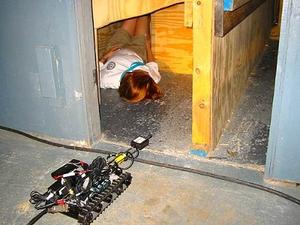Search and rescueSelf-learning robots to be used in earthquake, disaster rescue missions
Rescue robots capable of understanding the changing and unpredictable environment of disaster scenarios may one day be deployed to search for survivors in the aftermath of earthquakes; a robot equipped with a newly developed software, for example, would be able to recognize how something such as a stick could be used as a tool to push an object through an area too small for the robot to go into

Scientists strive to add learning to the robots repertoire // Source: wired.com
Rescue robots capable of understanding the changing and unpredictable environment of disaster scenarios may one day be deployed to search for survivors in the aftermath of earthquakes. This is the vision of inventors Erwin Prassler and Ivan Bratko, who have developed a software algorithm that takes data from a robot’s sensors as it moves through an area to create models and predict how objects in the vicinity will change their position relative to its movements.
Using the same algorithm, Bratko said that the robot can learn physical concepts such as whether an object is moveable and where it can be moved to. He added that it also gives the robot the ability to learn ‘abstract concepts’ such as the structural stability of an object.
Siobhan Wagner writes that current pre-programmed robots are limited to single tasks and cannot perform any new tasks or cope with unforeseen operational conditions. Prassler of Bonn-Rhein-Sieg University of Applied Sciences in Germany and Bratko from the University of Ljubljana in Slovenia set out to solve that problem through the EU-funded XPERO project. The project, which has now come to a successful conclusion, sought to enable a robot autonomously to conduct experiments in the surrounding world and gain new insights, not only quantitatively but also qualitatively (see Prassler and Bratko, “Robot learns fundamental mathematical and physical concepts by experimentation”).
Bratko said that their software allows a robot to learn an object’s static properties, its relationship to other items, and their potential usefulness. For example, he said, a robot embedded with their software would be able to recognize how something such as a stick could be used as a tool to push an object through an area too small for the robot to go into.
Bratko said this sort of robotic guile could be a useful feature for future robots that might be used for domestic services or rescue operations.
While commercial applications are still some time away, Bratko said that there is a clear need for the technology, especially in the rescue operation situation, because current robots are not up to the job. “With rescue missions, the robot needs to orientate itself in a completely unknown environment that is very unpredictable and has to learn while it’s on this rescue mission after an earthquake, for example,” he said. “The work we are doing is important for those applications.”
